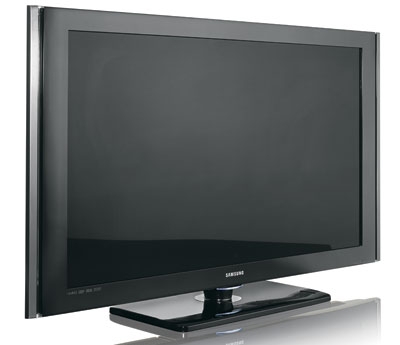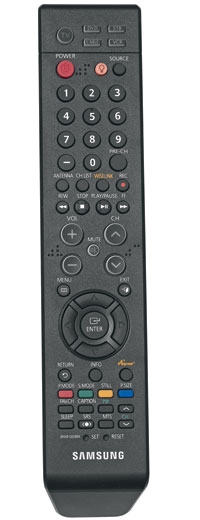Plasma vs. LCD: Round II Page 4

Where the LCD fell off the rails, though, was with its horizontal viewing angle. As we moved off-center, even from 6 or 7 feet away, picture contrast began to drop the moment you went beyond the left or right edge of the screen. (The same thing happened with the 46-inch version Al reviewed earlier.) The viewing angle was so narrow that it was impossible for the three of us to evaluate the LCD while sitting on the same couch centered between the two sets. Only the guy sitting on the end toward the LCD got a good picture - and it wasn't as good as what you saw directly in front of the TV. The plasma, by comparison, had a very wide viewing window with a consistent image that began to drop off only at very extreme angles.
 We conjectured that this viewing-angle problem might be technology-related. The translucent filters and protective layers used over the pixel grid have an impact on an LCD's viewing angle, and manufacturers sometimes make tradeoffs for the sake of better light transmission or contrast. LCDs have traditionally suffered from limited viewing angle. But given that we've seen a number come through lately that had relatively wide windows - notably the 47-inch JVC reviewed in December 2007 - it's reasonable to wonder if Samsung didn't make a tradeoff to extract the absolute blackest blacks from these LED-driven LCDs.
We conjectured that this viewing-angle problem might be technology-related. The translucent filters and protective layers used over the pixel grid have an impact on an LCD's viewing angle, and manufacturers sometimes make tradeoffs for the sake of better light transmission or contrast. LCDs have traditionally suffered from limited viewing angle. But given that we've seen a number come through lately that had relatively wide windows - notably the 47-inch JVC reviewed in December 2007 - it's reasonable to wonder if Samsung didn't make a tradeoff to extract the absolute blackest blacks from these LED-driven LCDs.
Also, this LCD has an unusually glossy screen surface - again, just like that of the 46-inch version we tested earlier. And like that model, it picks up a lot of screen glare in rooms with bright ambient light. The plasma was better here, but only by a little. We'd strongly recommend controlled lighting for both of these TVs.
It became clear that the slight edge the plasma enjoyed in most areas of picture uniformity became a blowout once we factored in the LCD's highly restrictive viewing angle. Plasma 9½, LCD 7.
Contrast Drumroll, please: We spend so much of our time yakking about blacks because, when well reproduced, they add something special to a TV image. In bright shots, the extra contrast provided by solid black reproduction results in exceptionally vibrant and saturated colors. In shots with bright and dark areas, such as sunlit scenes with highlights and shadows, the wider range of dynamic contrast adds a pop to the image that's visible as depth. In very dark scenes, that extra bit of deep black on a properly adjusted set lets you see realistic shadow details without sacrificing overall contrast, as you would if you just turned up the brightness (that is, black level) control. Black isn't everything in a TV, but it's a lot.
We started this final part of the face-off by cueing up a couple of nighttime and dark interior scenes from Black Book. In an early scene where a black sedan pulls up to a red-brick building's circular drive as night descends, there were some obvious differences between the TVs. As the car moved through the near-darkness, the Samsung LCD looked pretty good, delivering substantial blacks in the car itself and the letterbox bars that framed the screen.
But when we looked over at the Pioneer, we immediately knew we were seeing something special. The same features were so deep that it made the blacks on the LCD look gray - even though this Samsung had the best blacks we've ever seen from an LCD. On the plasma, the car appeared more etched and dimensional against the dark background, thanks to the extra low-level detail, and the letterbox bars virtually disappeared into the set's black frame.
To the LCD's credit, its less-deep black made for more shadow detail: You could better see the brickwork of the mansion than on the plasma, and there was more detail in a large tree in front of the building. We couldn't have achieved that on the plasma without adjustments that would have sacrificed some of the richness of its black reproduction. But even in this relatively dark, shadowy scene, the plasma's extra image depth was fairly obvious.
Other scenes with different lighting produced more similar results. A bright scene from Vertical Limit shot on a snow-crested peak revealed more detail in the undulating snow on the Samsung LCD, with dark areas looking about the same as on the Pioneer plasma. But with the most challenging material, the plasma trounced the LCD again and again. And when Al hit the button to jump to the opening scene of the Jupiter Mission in 2001: A Space Odyssey, the sight of the bright white spaceship against its blanket of black made all three of us gasp. The image was indeed film-like, and it imparted a nearly three-dimensional depth. When we watched a daylight scene with the film's ape men, the black hair on the costumes had a bit more detail on the LCD. But the realism and contrast of the much deeper black on the plasma delivered a dimensionality and punch to other colors that we preferred.
We would have liked this part of the test to be closer, but it wasn't to be. In giving the plasma a 9½ for contrast, the best we could muster for this still very fine LCD was a generous 8.
Bottom Line We saw some pretty impressive pictures from both TVs in this face-off. But in the end, there was no question that the plasma was our winner, based largely on the incredible strength of its reproduction of blacks.
It's hard to know what LCD might have up its sleeve. I've seen some outstanding LCD prototypes in the last year that suggest the technology has a lot richer blacks to offer than we've seen to date. And I do know there will soon be more LED-driven panels that should improve on this first-generation model. But for now at least, with Pioneer continuing to drive the state of the HDTV art, one more round goes to plasma.




























































